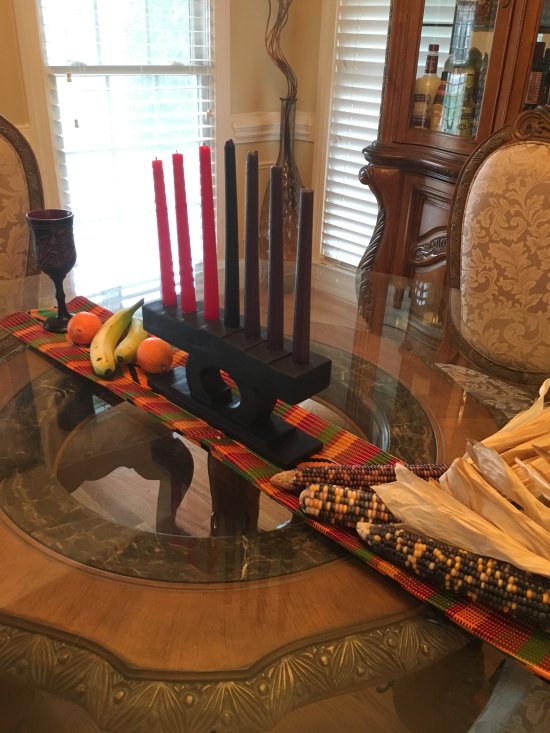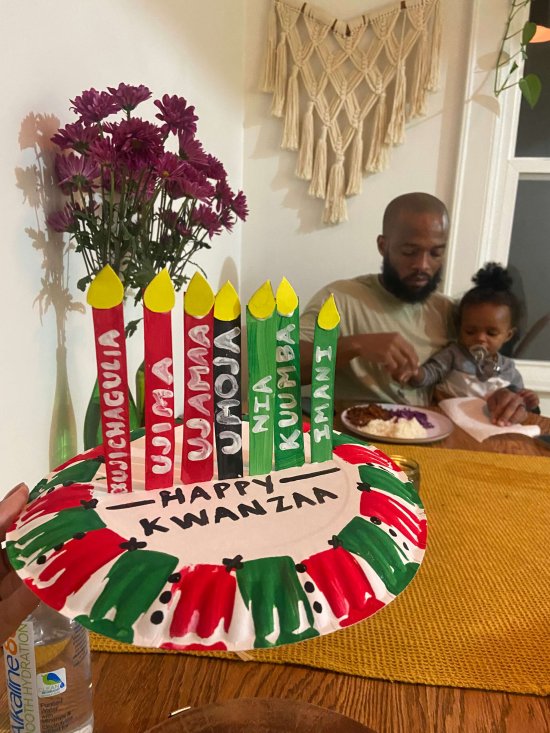
My introduction to Kwanzaa left a lot to be desired.

After spending my whole life (which was then, admittedly, only a decade) celebrating the glory of a commercialized Christmas, my brother and I were told that we’d no longer be receiving gifts on December 25th. Instead, we’d receive a gift for every day of Kwanzaa: a week-long, Pan-African holiday that starts the day after Christmas and ends on New Year’s Day.
Despite gifts still being a part of this plot twist, all my kid brain processed was that I’d now be limited to 7 presents, and I’d be empty handed on a day most of my friends were busy opening a stockpile of gifts. Color me ungrateful and underwhelmed.
As if the delayed gratification wasn’t enough reason to be unimpressed, there was also a cultural element that I didn’t yet have the sense to appreciate. Kwanzaa was inspired by the many harvest festivals celebrated across the African diaspora and centered on seven principles, expressed in Swahili. Those principles (also known as the nguzo saba) are umoja (unity), kujichagulia (self-determination), ujima (collective work and responsibility), ujamaa (cooperative economics), nia (purpose), kuumba (creativity), and imani (faith).
Each day, we light one of the candles and do an activity intended to bring its corresponding principle to life. Underlying these principles is the knowing that we are celebrating a heritage we couldn’t fully know due to the enslavement of our ancestors. However, in place of a historical narrative that leaves us victimized and displaced, we receive a sense of pride and social

responsibility.
As an adult, the latter made for a lasting impression. One that I was eager to actualize in the lives of my children. Because my husband’s childhood tradition involved opening a gift on Christmas Eve, we merged the two in a way that allows us to honor both of our childhood customs. This means my daughters open one gift a day from Christmas Eve to New Year’s Day, and they don’t know to be grateful for nine gifts instead of seven… because the way we do it is the only way they’ve done it. Though they sometimes struggle with the desire to open more than one gift, there’s a clear appreciation around waking up for multiple days with something to unwrap.
So, in addition to the Christmas tree and stockings displayed within our home, you will also see the symbols of Kwanzaa: a kinara (which holds seven candles, similar to a menorah), the candles themselves (three green, three red, and one black), ears of corn (representing the children in our home), fruit and veggies (representing the labor and abundance of harvest), a mat (commonly made of straw, though ours is African fabric, representing the foundation of family), and a unity cup (which we pass around when giving thanks and acknowledging our ancestors).
While gifts (zawadi, in Swahili) are another symbol, ours sit under the Christmas tree and experience a slow unveiling as the year wraps up. So, though my introduction to Kwanzaa felt like a stark contrast to Christmas, our girls know Christmas and Kwanzaa as a harmonious pairing and cause for extended celebration. While a feast is usually held on December 31st, our family celebrates with another family by coming together on the evening of January 1st.

And both of these things really reinforce the magic of this season. Because it’s less about what society has normalized and more about celebrating in a way that adds value to the lives of our loved ones. So, one year we may embody ujima (collective work and responsibility) by grocery shopping together and making meaning of the fact that we all help in putting the groceries away… and another year, we work together to create a piece of art for the house. Similarly, one year we embody kujichagulia (self-determination) by coloring masks of our choice, and another year we each write out affirmations in alignment with our intentions for the future.
What remains consistent, either way, is that we spend a week centering what it means to be of African descent and to be in community with others. Because celebrating the beauty of a culture we’re ever eager to know is less about exclusion and more about self-awareness. It’s about making sure my daughters know what they bring to the table while being absolutely certain they also recognize they aren’t seated at a table alone. And that’s the desire I hold for every family and person encountering this season… a sense of self that leaves them proud and a sense of community that nurtures the interdependence innate to the human experience.



